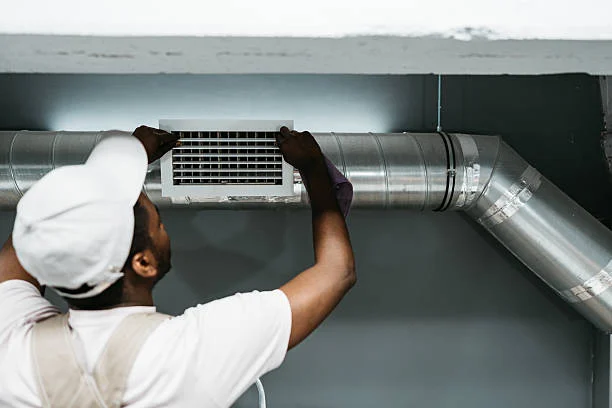Air conditioning systems are designed to provide comfort, but their effectiveness relies heavily on the condition and design of the ductwork that carries air throughout a building. While the unit itself often receives the most attention, ducts play a crucial yet frequently overlooked role in efficiency and performance. Leaks, poor insulation, or improper layouts can compromise even the most advanced system, resulting in higher energy bills and unnecessary repairs. Understanding how ductwork affects airflow and overall system function is crucial for ensuring cooling systems operate at their intended capacity. By keeping ducts properly maintained and designed, homeowners and businesses alike can reduce strain on equipment and extend its operational life.
Uncover more angles and ideas that link perfectly to what you just read.
Airflow balance and energy use
The efficiency of an air conditioning system depends mainly on how air moves through the ducts. If ducts are too narrow, leaky, or poorly sealed, the system must work harder to push air into each room. This extra strain forces the blower and compressor to operate beyond their intended capacity, increasing energy consumption while reducing the lifespan of the parts. Leaks can allow cooled air to escape into attics or crawl spaces, wasting energy and creating uneven cooling throughout the home. Proper duct sizing and sealing improve efficiency by ensuring airflow reaches its intended destination without unnecessary loss. In this way, ducts serve as the foundation of reliable air conditioning, where smooth airflow keeps systems balanced and energy use more manageable.
Comfort and system strain
Beyond energy efficiency, ductwork has a direct impact on comfort inside the home. Uneven airflow leads to hot and cold spots, leaving some rooms uncomfortable while others are overcooled. This imbalance often results in the air conditioner cycling more frequently to compensate, which increases wear on critical components. Well-designed ducts enable consistent cooling throughout all rooms, making indoor spaces more pleasant while reducing the likelihood of equipment damage. The relationship between ducts and comfort highlights why they should be treated as a vital part of the system rather than an afterthought. Many modern upgrades, including services offered by Comfort Indoor Solutions, focus on optimizing airflow to ensure the equipment performs at its peak without unnecessary strain. By reducing the load placed on the air conditioner, proper ductwork minimizes repair needs and extends the overall service life of the system.
Impact on repairs and longevity
Poor ductwork not only reduces efficiency but also contributes to recurring repair issues. When ducts leak or restrict airflow, components such as the evaporator coil and blower motor endure higher stress, which can lead to overheating or premature breakdowns. These problems often result in repeated service calls that could have been prevented with better duct management. Regular inspections and adjustments to ductwork can catch small leaks or misalignments before they turn into costly repairs. Over time, investing in duct maintenance saves money by reducing both energy waste and system strain. The difference in repair frequency between homes with well-maintained ducts and those without is substantial, indicating that ductwork has a direct influence on the reliability of air conditioning systems.
Long-term efficiency and comfort
Ultimately, the role of ductwork in air conditioning extends beyond short-term performance to long-term reliability and comfort. Efficient ducts reduce energy consumption, ensure balanced airflow, and protect equipment from unnecessary stress. This results in fewer breakdowns, lower utility bills, and a system that lasts longer while delivering consistent cooling. Homeowners who treat ductwork as part of the overall system rather than a hidden component benefit from comfort that is stable and reliable. By prioritizing ducts in both installation and maintenance, air conditioners can operate closer to their designed potential, creating healthier and more enjoyable living environments. In this way, ductwork forms the backbone of efficiency and long-lasting performance.
Ductwork plays a crucial role in determining the effectiveness of air conditioning systems, influencing everything from efficiency to the frequency of repairs. Properly designed and maintained ducts support airflow balance, reduce strain on components, and ensure indoor comfort across every room. Neglecting them, on the other hand, leads to wasted energy, uneven cooling, and repeated breakdowns that shorten the system’s life. By paying attention to the ducts alongside the central unit, homeowners protect their investment and create an environment where comfort and savings work together. Strong ductwork ensures that an air conditioner delivers dependable cooling year after year.
Keep exploring — inspiration and creativity at Management Works Media await in every new post.






